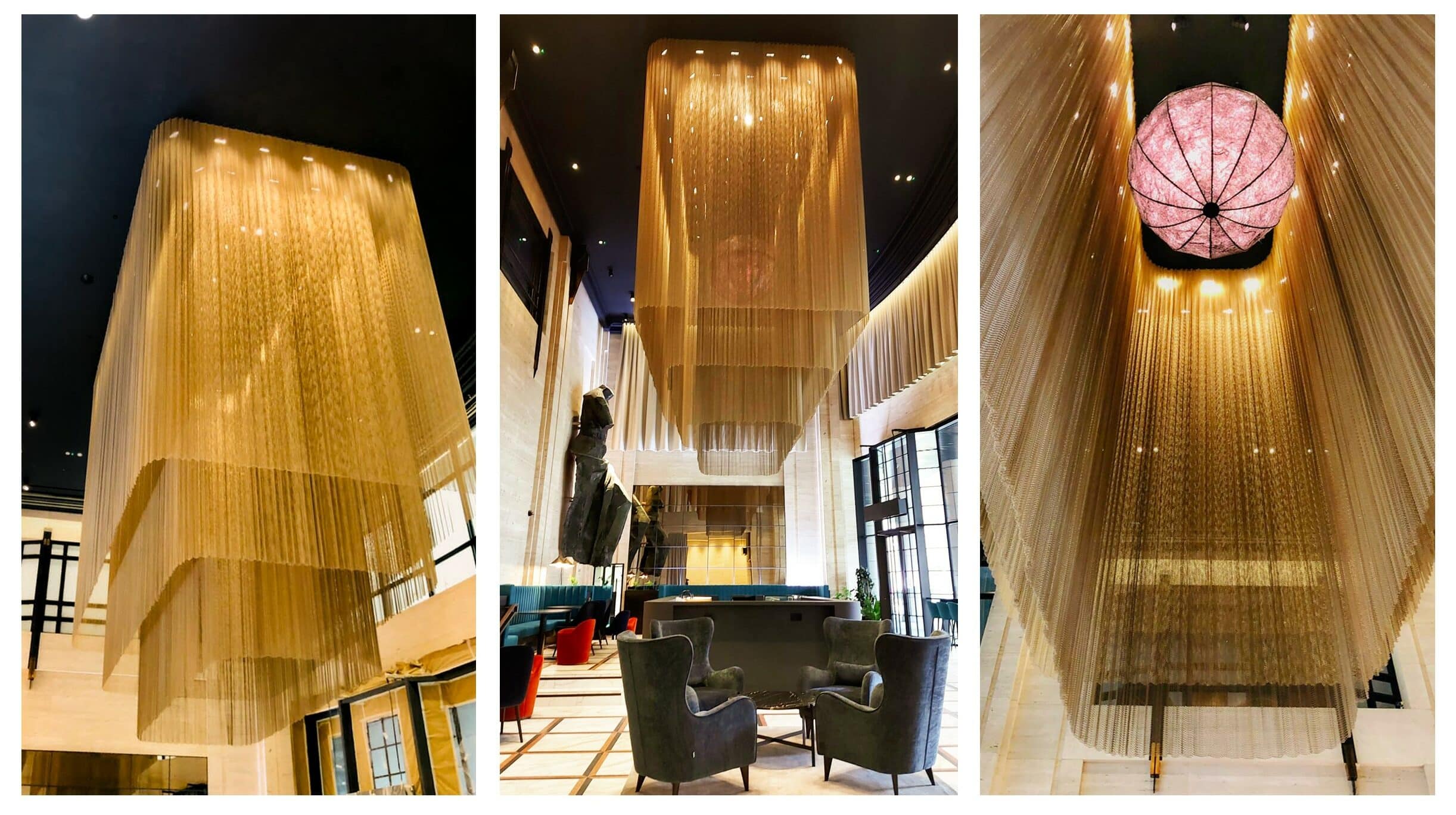
How curtains are creating a ‘home from home’ for workers returning to the office
The past few years have seen a gradual merging of work and home life. Flexible working has become more popular, with people creating home offices or using a dining room as a workspace by day, before returning to normal at night.
The rise of remote working during the pandemic accelerated this change. When you work from home, you get to choose the environment, surrounding yourself with the things that make you comfortable and productive.
Now businesses are encouraging their staff back to the office, with the likes of Disney mandating a four-day return to the office for staff, beginning in March this year. And many are adapting their spaces to be a home-from-home, somewhere just as comforting, inviting, familiar and less formal.
That home-from-home mentality plays out in two main themes: comfort and privacy.
Curtains as a source of comfort and privacy
Curtains and fabrics are playing a key role in bringing a soft, relaxed feel into the office in a way that may make people more productive and reduce stress.
Fabrics offer flexibility. Employers want to invite workers back to areas that are spread out but still spark interactions, similar to a coffee shop or co-working space. The recent redevelopment of 88 Wood Street in London used curtains to define these spaces. Occupants and designers aim to create zones in which individuals and groups can work without disturbance (visually or audibly) by others.
Above: Waverley’s design and installation of 2 no. complex room divider curtains (6m+ drop) at 88 Wood Street’s reception area
The harsh ‘goldfish bowl’ glass meeting room is being replaced by flexible division of areas which create smaller, private meeting rooms, without expensive internal renovations. Curtains are one effective means of achieving this result.
Such areas can be transformed into large meeting spaces simply by drawing back the curtains. At Greenwich’s Design District, interior architect Roz Barr has used acoustic fabrics in building C3 to create flexible ‘pod-like’ booths for private conversations within the open-plan office space.
Above: Waverley’s installation of acoustic curtains, suspended from the ceiling, to create ‘pod-like’ booths.
A similar effect can be seen at Panagram in Clerkenwell. A 1980s office building remodelled with a retro-pop aesthetic, by architects Buckley Gray Yeoman of Shoreditch. Suspended wave curtains work with the exposed services and help divide the proposed space in a way that allows them to be moved around or tidied and stacked away, depending on requirements. They create acoustic zones that commercial interiors magazine Mix Interiors describe as “promoting collaborative and flexible working patterns”.
Above: Waverley’s installation of room divider curtains at Panagram for Buckley Gray Yeoman.
Wellbeing was a key focus of the brief from Modus Workspace at 338 Euston Road, part of the Regent’s Place Circular Economy project. The project also saw a renewed focus on indoor air quality, biophilia, and flexible spaces for social gathering. This required a complete rethink of the ground floor entrance experience to create more comfortable and lively spaces where people could meet, work and socialise. We installed wave curtains to the double-height glazing in reception. Big Weave, a sheer curtain fabric by Kvadrat, was chosen for its patterned weave, so that it would diffuse light and create a dappled effect across the space.
Above: Our highest curtain installation to date – a 10 metre drop for a single curtain
Riding the wave
Stylistically, offices like Panagram are increasingly turning to the wave heading: a neat and stylish curtain heading system, created by combining a specially designed heading tape and wave glider-cord, to get a soft and simple continuous wave effect.
Wave curtains offer a less formal look than other curtain header styles, which is why they have become the curtain style of choice in the modern workplace. Screened-off areas can be created with blackout curtains or coil mesh, which allows the natural light to penetrate the pod while keeping prying eyes away. These also dampen the acoustic vibrations so the meeting can be conducted without disturbing others working nearby.
Above: Wave curtains have become the curtain of choice in modern workplace interiors
Coil mesh curtains produce stunning results
Curtains are playing a role far beyond meeting spaces. Some offices are enticing staff back by bringing a luxury hotel vibe into their reception areas.
Gone are the angular chairs and sharp-edged coffee tables; in have come deep sofas, plump cushions and large, light, intriguingly shaped windows shaded by giant curtains. Even the chandeliers have been softened with sheer coil mesh replacing glass and steel.
Above: Waverley’s installation of DrapeTech Coil Mesh at Fletcher Priest’s redevelopment of 155 Bishopsgate, London – a stunning ceiling feature.
Win the battle for talent
Ultimately, in the post-pandemic battle for talent, it is these finer details that matter to employees. An attractive office environment is a physical statement of a company’s values: “we treat you better”.
The more human and homely scale of modern office buildings presents an opportunity for firms to create an inclusive environment that promotes the twin pillars of wellbeing and productivity.
If you’d like to discuss curtains for your commercial projects, then please contact us here and one of our expert team will assist you!





